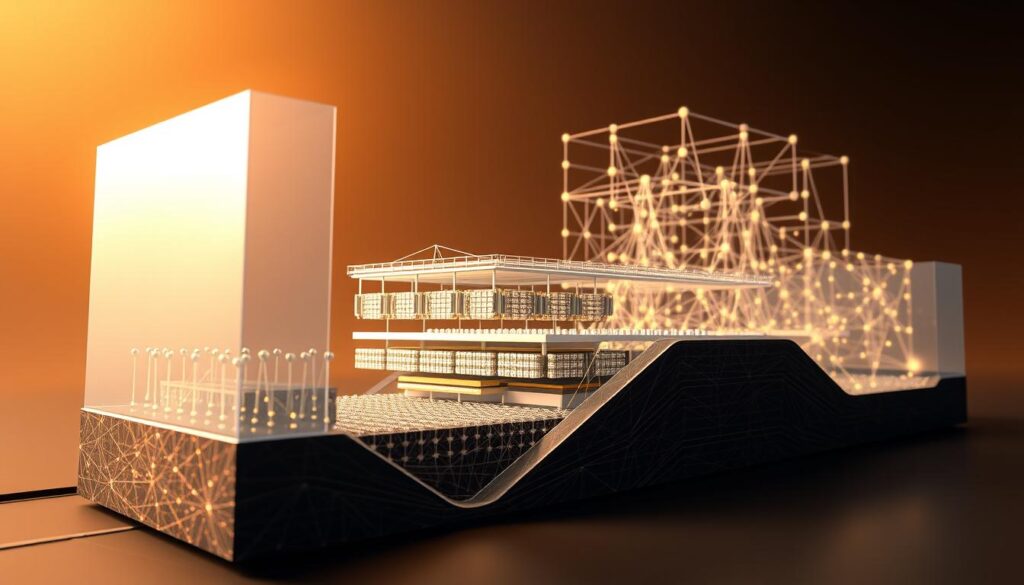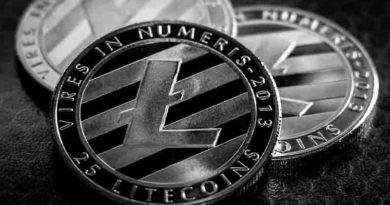Polygon (MATIC): The Ethereum Scaling Solution You Need to Know
Over 80 Ethereum dApps are built on Polygon, a layer 2 scaling solution. It’s tackling Ethereum’s scalability limits. Ethereum handles just 15 transactions per second, but Polygon aims for millions of TPS once fully scaled.
Its Aave lending protocol alone holds over $1 billion in liquidity. It serves more than 8,000 users daily. With 390,000 unique wallets active and $0.015 average fees, this network has processed 20 million transactions since launch.
Born as Matic in 2017, it rebranded to Polygon in 2021. Now, it supports 10,000+ dApps via a hybrid Proof-of-Stake system. Even Donald Trump’s NFTs run on its infrastructure.
Key Takeaways
- Polygon’s layer 2 tech powers 250+ dApps, including Aave’s $1B liquidity.
- Average fees stay at $0.015, slashing Ethereum’s high gas costs.
- Processed 2 billion transactions since 2020, targeting millions of TPS.
- Rebranded from Matic in 2021, now supporting 14 blockchains via ChainPort.
- Used by major brands, like Donald Trump’s NFT collections.
What is Polygon (MATIC) and Why Does Ethereum Need It?
Ethereum has grown a lot, but it faces big challenges. The crypto blockchain network gets too busy, leading to slow transactions and high fees. Polygon is a key solution to these problems.
Understanding the Ethereum Scalability Problem
Ethereum’s design focuses on security and decentralization. In 2021, it handled over $1.6 trillion in transactions. This showed the need to balance speed, cost, and security.
During busy times, users faced fees over $50. This made it hard for more people to use Ethereum.
| Network | TPS | Average Fee |
|---|---|---|
| Ethereum | 14 | $15–$80 |
| Polygon | 32+ | <$0.01 |
Introducing Polygon as a Layer 2 Solution
- Launched in 2017 as Matic Network, it rebranded in 2021 after a Binance fundraising round.
- Uses a proof-of-stake mechanism, processing up to 65,000 TPS on its sidechain.
- Transfers 1 billion+ transactions, reducing Ethereum’s congestion by bundling data off-chain.
“Polygon is like a traffic cop for Ethereum, directing congestion to faster lanes.” — Polygon Foundation whitepaper
The Vision Behind Polygon’s Ecosystem
Polygon aims to create an “Internet of Blockchains,” making different networks work together. It supports developers with projects like Polygon Village 2. With a $11B market cap, MATIC is seen as a key to Ethereum’s success.
The Evolution of Polygon: From Matic Network to Blockchain Powerhouse
In 2017, Matic Network was launched with a goal to solve Ethereum’s scalability issues. Jaynti Kanani, Sandeep Nailwal, and Anurag Arjun created a platform using Proof-of-Stake (PoS) and sidechains. This reduced transaction costs. By 2020, it became a Layer-2 solution through partnerships with Ethereum’s core developers.
In February 2021, the project changed its name to Polygon. This move marked a shift from a single sidechain to a full ecosystem. It became a center for decentralized finance (DeFi) apps, NFT platforms, and enterprise solutions. The rebrand highlighted Polygon’s aim to support various scaling methods, including ZK-Rollups and Optimistic Rollups.
“Polygon isn’t just a scaling layer—it’s a gateway to mass adoption,” stated co-founder Sandeep Nailwal during the rebrand announcement.
Key milestones include:
| Year | Milestone | Impact |
|---|---|---|
| 2017 | Launch as Matic Network | Launched with PoS consensus and plasma framework |
| 2020 | Ethereum Partnership | Integrated Ethereum Virtual Machine compatibility |
| 2021 | Rebrand to Polygon | Expanded focus to include multiple Layer-2 solutions |
| 2022 | Decentralized Finance Adoption | Hosted over 10,000 dApps, including Aave and SushiSwap |
Today, Polygon’s ecosystem includes decentralized exchanges, NFT marketplaces, and gaming platforms. It has become a key part of Ethereum’s scaling roadmap.
How Polygon’s Architecture Works
Polygon’s architecture is a modular design that boosts Ethereum’s power as a layer 2 scaling solution. It has four main layers for handling transactions, security, and cross-chain interactions. This setup keeps things fast and affordable.

- Staking Layer: Uses smart contracts to manage validators and ensure decentralized governance across networks.
- Aggregation Layer: Connects multiple blockchains, enabling atomic swaps and cross-chain smart contracts between Ethereum and Polygon.
- Execution Layer: Processes batches of transactions in parallel, reducing congestion on the Ethereum mainnet.
- Proving Layer: Verifies transactions using zero-knowledge proofs, ensuring privacy while maintaining transparency.
“Polygon’s ZK prover reduces proof generation time by 100x compared to earlier tech,” states the Polygon whitepaper. This innovation allows near-real-time validation without compromising security.
Each layer works together to form a hybrid system. The proof-of-stake consensus mechanism replaces energy-heavy processes, slashing energy use by 99.95% compared to traditional crypto blockchain networks. Validators are chosen based on stake volume and performance, creating a dynamic security network.
Polygon remains intertwined with Ethereum’s infrastructure. Transactions finalized on Polygon are anchored to Ethereum’s mainnet via checkpointing, ensuring compatibility. This dual system lets developers deploy smart contracts on Polygon while leveraging Ethereum’s security. Over 7,000 dApps already use this hybrid model, proving its real-world scalability.
Polygon’s Layer 2 Scaling Technology: Breaking Down the Magic
Polygon’s layer 2 scaling solution makes Ethereum scalability possible without losing security. Think of Ethereum’s mainnet as a busy highway. Polygon’s tech is like a parallel lane, handling transactions off-chain before sending them back securely. This reduces fees and makes smart contracts almost instant.
“ZK rollups use validity proofs, while optimistic rollups use fraud proofs.”
Here’s how it works:
- ZK (Zero-Knowledge) Rollups pack thousands of transactions into one proof, checked by Ethereum’s mainnet.
- Optimistic Rollups assume transactions are right but allow challenges if they’re wrong.
- Plasma Chains use fraud proofs to keep off-chain data safe, though less used today.
| Technology | Proof Type | Cost per Tx | Speed |
|---|---|---|---|
| ZK Rollups | Validity Proofs | $0.001 | 1 second/block |
| Optimistic Rollups | Fraud Proofs | $0.01 | 2-7 days challenge period |
| Plasma Chains | Fraud Proofs | $0.005 | Depends on chain rules |
Polygon’s zkEVM innovation mimics Ethereum but uses ZK proofs. This lets developers create smart contracts with almost no fees, keeping Ethereum’s security. Transactions settle in 1 second, 20x faster than Ethereum’s 20-second blocks. Polygon can handle 65,000+ transactions per second, 3,000x more than Ethereum’s 20 TPS. This makes DeFi apps, NFTs, and gaming run smoothly, avoiding Ethereum’s $50+ congestion fees.
Behind the scenes, cryptographic proofs act like digital notaries. Every batch of transactions is verified by math, not miners, ensuring trust without centralization. This blend of speed and security makes Polygon the most adopted layer 2 scaling solution for Ethereum.
Key Benefits of Using Polygon for Developers and Users
Polygon’s technology brings big wins for developers working in Ethereum’s world. Users see quicker transactions and lower fees. Developers get tools to build apps that scale well. This platform makes Ethereum’s security meet practical needs.
| Metric | Ethereum | Polygon |
|---|---|---|
| Transactions/Second | ~14 | Up to 65,000 |
| Average Gas Fee | $50–$80 | $0.01–$0.10 |
| Deployment Cost (DApp) | High | $1,499 |
Faster Transaction Speeds and Lower Gas Fees
Ethereum can only handle 14 transactions per second. Polygon’s sidechains up this number to 65,000 TPS. Gas fees fall from $80 to under $0.10, making daily transactions possible.
Apps like Aave and Curve see costs drop by 99% on Polygon.
Enhanced Security and Decentralization
Polygon uses Proof-of-Stake consensus with validator nodes. This mirrors Ethereum’s security but avoids centralization risks. Its design ensures no single point of failure, keeping trust for high-value transactions.
Blockchain Interoperability Advantages
Polygon’s framework lets for cross-chain communication. This makes seamless transfers between Ethereum and other networks possible. It opens up new chances for dApps and global payments, breaking down barriers between blockchains.
Environmental Benefits Compared to Other Networks
Switching to PoS reduced energy use by 99% compared to Ethereum’s old PoW system. This move supports global sustainability goals, making Polygon a leader in eco-friendly blockchain solutions.
Popular Applications and Use Cases in the Polygon Ecosystem
Polygon’s ecosystem supports real-world applications across finance, gaming, and enterprise solutions. It offers scalable, cost-effective blockchain experiences. This includes lending platforms and NFT marketplaces.
Decentralized Finance Platforms
Decentralized finance protocols like Aave and QuickSwap thrive on Polygon. Aave’s $1 billion locked in Polygon markets shows the network’s role in decentralized finance. Users get low-fee loans and liquidity pools, with over $5 billion in total value locked (TVL) across DeFi apps.

NFT Marketplace Innovations
Polygon’s NFT marketplace solutions power platforms like OpenSea and Collab.Land. These platforms verified over 6.5 million wallets. Games like Illuvium use Polygon’s speed to reduce lag, while DraftKings focuses on sports NFTs.
- Fast NFT trades with near-zero fees
- Blockchain gaming with real-time transactions
Enterprise and Cross-Chain Solutions
Businesses use Polygon’s smart contracts for custom solutions. Polygon Studios helps companies transition to Web3, while Alchemy’s tools simplify NFT development. The Polygon Bridge connects Ethereum and Polygon, enabling cross-chain DeFi interactions.
From finance to gaming, Polygon’s ecosystem shows how scalable blockchain tech can drive mainstream adoption. Its tools empower developers to build without sacrificing speed or cost efficiency.
MATIC Token Economics and Investment Considerations
The MATIC token is key to Polygon (MATIC)‘s success. It makes cryptocurrency transactions possible and keeps the crypto blockchain safe. With 10 billion tokens available, over 62% are already in use. This balance ensures both scarcity and access for everyone.
- Utility & Staking: MATIC is used for network fees, voting, and staking. Stakers help validate transactions and earn rewards, keeping the network secure.
- Price Projections: Experts think MATIC could reach $1.83 by 2024 and $8.30 by 2030. This is due to Polygon’s growth and Ethereum’s success.
- Risk Factors: MATIC’s value is closely linked to Ethereum and the crypto market. Changes in laws or new competitors could affect its value.
Investors should watch for new dApps on Polygon and Ethereum updates. MATIC’s value has grown 900% since 2021, showing its potential. Yet, it’s also very volatile. The future depends on how fast Polygon grows and how well it meets market demands.
Comparing Polygon to Other Ethereum Scaling Solutions
Ethereum faces big challenges in scaling. Polygon offers a hybrid model, combining Plasma chains and proof-of-stake. This powers over 250 DApps. But, other solutions like Optimistic Rollups, ZK-Rollups, and sidechains have their own strengths. Let’s see how Polygon measures up.
“There are no one-size-fits-all scaling solutions. A gaming platform, for example, is best served by an L2 that offers the highest possible throughput, while a decentralized exchange would prioritize security over per-tx costs.”
Here’s how Polygon compares:
Polygon vs. Optimistic Rollups
- Optimistic Rollups (Arbitrum, Optimism) use fraud proofs, delaying withdrawals by up to 7 days. Polygon’s Plasma chains finalize transactions in seconds, making it great for fast apps like NFT marketplaces.
- Optimistic’s layer 2 scaling solution ensures Ethereum’s security but sacrifices immediacy. Polygon balances both for apps needing instant finality.
Polygon vs. ZK-Rollups
- ZK-Rollups (StarkEx, zkSync) use zero-knowledge proofs for privacy but require complex setup. Polygon’s hybrid approach avoids this trade-off, supporting diverse use cases like DeFi and gaming without sacrificing throughput.
- ZK-Rollups excel in privacy but lag in flexibility. Polygon’s modular design adapts to various needs while maintaining Ethereum’s security model.
Polygon vs. Sidechains and Alternative Layer 1s
- Sidechains like Solana or Avalanche bypass Ethereum entirely, risking security for speed. Polygon retains Ethereum’s core security guarantees while scaling, offering blockchain interoperability with the mainnet.
- Alternatives like Avalanche prioritize throughput but lack Ethereum’s developer ecosystem. Polygon’s layer 2 scaling solution bridges innovation with compatibility.
| Criteria | Polygon | Optimistic Rollups | ZK-Rollups | Sidechains/Alt L1s |
|---|---|---|---|---|
| Speed | Instant finality via Plasma/PoS | 7-day withdrawal delays | Near-instant but complex setup | Fast but isolated from Ethereum |
| Security | Ethereum’s base layer protection | Ethereum’s security | Ethereum’s security | Varies by chain |
| Interoperability | Full Ethereum compatibility | Basic cross-chain support | Modest interoperability | Limited cross-chain use |
Developers have different priorities. For apps needing speed, Polygon’s layer 2 solution beats Optimistic’s delays. ZK-Rollups are best for privacy-first projects. Polygon’s blockchain interoperability ensures seamless Ethereum integration. The best choice depends on balancing speed, security, and ecosystem alignment.
Conclusion: The Future of Polygon in the Evolving Blockchain Landscape
Polygon (MATIC) is becoming a key player in the blockchain world. It supports decentralized finance platforms like Aave, which has over $1 billion in assets. The MATIC token, worth $0.838, has seen ups and downs but is still important, thanks to partnerships with Starbucks and Prada.
Polygon’s Layer 2 tech can handle 65,000 transactions per second, much faster than Ethereum. It also makes connecting different networks easy, solving big problems. Upgrades like Polygon 2.0 will make it even better, matching Ethereum’s ETH 2.0 upgrade. Experts think MATIC could hit $2.87 by 2026 and $17 by 2030, thanks to more businesses using it.
Even with challenges from ZK-Rollups, Polygon leads thanks to its community and tech. It uses a proof-of-stake model, secured by 8 billion tokens. This makes it a strong contender for widespread blockchain use. Its growth from a small project to a major player shows its big potential in Web3.




